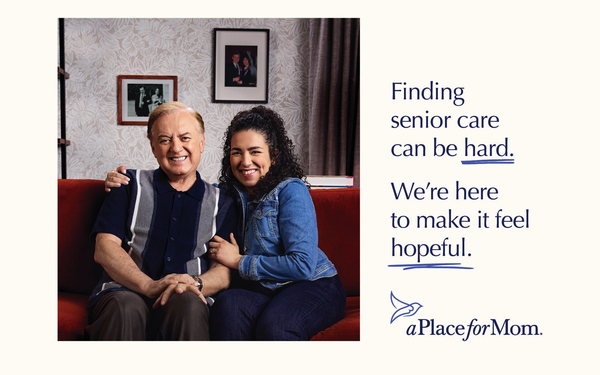
After 25 years of marketing its senior care
referral service largely through search engine marketing, A Place for Mom has pivoted to AI-driven tools, social media, videos, thought leadership and community-centered content, CEO Tatyana Zlotsky
tells Marketing Daily.
This shift -- from a reactive demand-capture model designed to reach caregivers “at the moment of urgent need” to a proactive demand-generation model
designed ”to connect with families before they’re in crisis” -- is a result of changes over the years in how caregivers search, share, and seek advice digitally, Zlotsky
says.
Just as A Place for Mom over the past quarter century moved “from in-person guidance to phone support to online connection, as the aging population grows, now in a world shaped by
new ways of discovery with AI, families are searching and choosing differently,” she explains.
advertisement
advertisement
A Place for Mom’s marketing shift doesn't just involve media, but also content.
The brand has moved “from product-first, utility-driven messaging to emotionally resonant storytelling that reflects the real, emotional complexity of caregiving,” Zlotsky relates,
describing the content as reflecting “how families ‘find, fund and feel’ through caregiving.”
For its first campaign under the new strategy, A Place for Mom is
leveraging “authentic caregiver voices and stories, anchored in their unique family traditions,” she says.
“We worked with 15 families to explore what caregiving looks like
in real life,” Zlotsky explains. “We dove deep into what it means for these families to think about the aging journey: what role the adult child plays, what role the senior plays, and how
that really changes.”
Reflecting A Place for Mom’s new direction, especially its desire for visibility in the AI search landscape, the campaign is heavily focused on YouTube,
social media, influencer marketing and what Zlotsky describes as “thought leadership across community and professional platforms.”
Four initial videos were posted to YouTube Nov.
12, the day the campaign launched. In this four-minute example, a daughter interviews her 80-year-old about growing older. Her final
question: “As we get older, what would you like from me and what can I do to help you?” His answer: “To have you okay with my change is going to make it more acceptable to me, being
allowed to change.”
Zlotsky says the brand has increased its use of caregiver influencers “because that’s where more authentic conversations can take place.”
Influencers telling their own stories “builds confidence, connection and community with new and existing audiences,” she says.
The campaign hasn’t forgotten paid media,
however. with direct mail, TV (CNN, The Hallmark Channel, Food Network) and print (Los Angeles Times, Chicago Tribune, New YorkPost) in the mix.
Everything falls under a new
company tagline -- “Where Love Finds Its Place.” The campaign --“reinforcing our role as a trusted partner during one of life’s hardest transitions” -- is expected to run
through early Q1 2026, according to Zlotsky.
A Place for Mom’s target audience remains caregivers. Two thirds (66%) of them are women, Zlotsky says, ”often managing care for aging
parents while juggling work and parenting responsibilities. Nearly half (45%) of those female caregivers are age 60 or older, meaning many are caring for others while facing their own health and aging
needs.”
“Now, we’re telling their stories in in their own voices, meeting them earlier in their journey, and acknowledging their emotional experience, not just their search
for care,” Zlotsky states. “We’re showing up with empathy, clarity and confidence to guide them through it.”
Campaign success will be tracked through Net Promoter
Scores, engagement metrics, social and AI sentiment, and funnel conversion (someone moving into one of A Place for Moms’ 15,000 partner senior living communities).